
What to see in the demilitarized zone (DMZ) of Hue?
- on Oct 23, 2019 By: Ngoc Nguyen
Since the Vietnam War is an integral part of the country's contemporary history, we will take you to discover the demilitarized zone, known as the DMZ, and all the vestiges of the war between the US Army and the one led by the father of the nation, President Ho Chi Minh. A surprising trip that will fascinate culture lovers and historians in the heart of a region of beauty that is often neglected by foreign travellers.
What is the DMZ?
The DMZ in Vietnam was a dividing line between the North and South traced at the 17th parallel north, about 100 kilometres north of the city of Hue. Marked during the partition of the country following the Geneva Accords signed on July 20, 1954 when the French had to withdraw from Vietnam and Indochina after their defeat at Dien Bien Phu.
It marked the separation between communist North Vietnam and nationalist South Vietnam waiting for elections that would never be held to decide the fate of the country. On the ground, the border is symbolized by the Ben Hai River. During the Vietnam War, this region was the scene of fierce and bloody battles for each party wanting to take for themselves this symbol of the division of the country.
Where to go to see the DMZ in Vietnam?
Ben Hai River
The Ben Hai River, which emerges from the Laotian highlands and empties into the East Sea, symbolized the demarcation line between North and South Vietnam, an important landmark in the partition of the country for the 1954 Geneva Accords.
Hien Luong Bridge
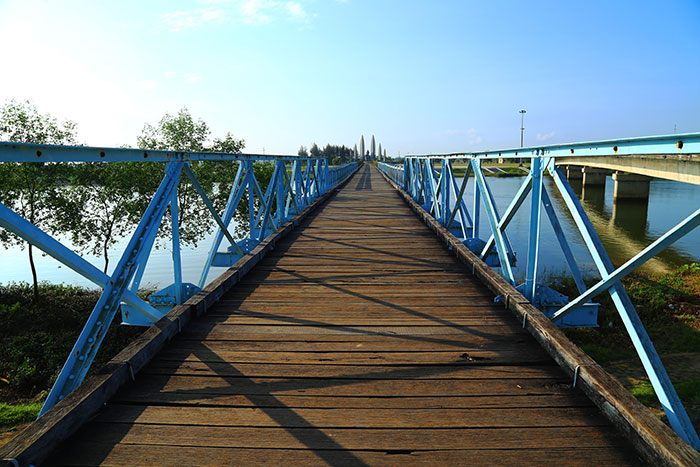
Hien Luong Bridge spanned the famous Ben Hai River. Built by the French in 1950, this bridge was 178 m long, consisted of 7 spans on a road consisting of 894 planks. The Geneva Accords wanted each party to exercise sovereignty over the 89 metre structure. In the great victory of the North Vietnamese revolutionary army in the spring of 1975, the Hien Luong Bridge became the bridge of reunification, a symbol of the desire for the two to be joined together again. The bridge still exists but is preserved as a historical monument, a special national vestige where many Vietnamese come to remember the many sacrifices of Vietnamese soldiers.
Vinh Moc tunnels

Located a dozen kilometres from the Hien Luong bridge, the Vinh Moc tunnels symbolise the resistance of the Vietnamese people, the incredible feat of human labour, engineering and perseverance in the face of intensive bombing by American planes. Secretly built between 1966 and 1967 by the inhabitants, this real "underground fortress" had 3 levels and stretched for several kilometres, serving as a refuge for civilians but also for the military.
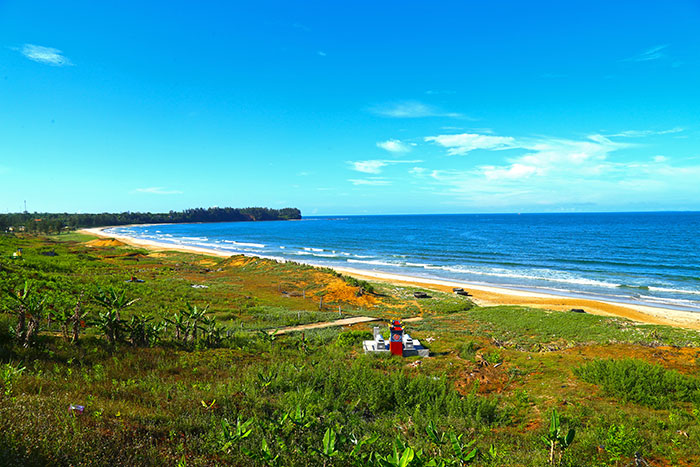
It was an underground city where there were dormitories, meeting rooms, kitchens, schools, operating rooms, nurseries and even a maternity ward that saw 17 births! The beaches around Vinh Moc are sublime and deserted so you can enjoy the magnificent scenery here, where the beach stretches as far as the eye can see, with golden sand beside the blue sea.
Truong Son Martyrs' Cemetery
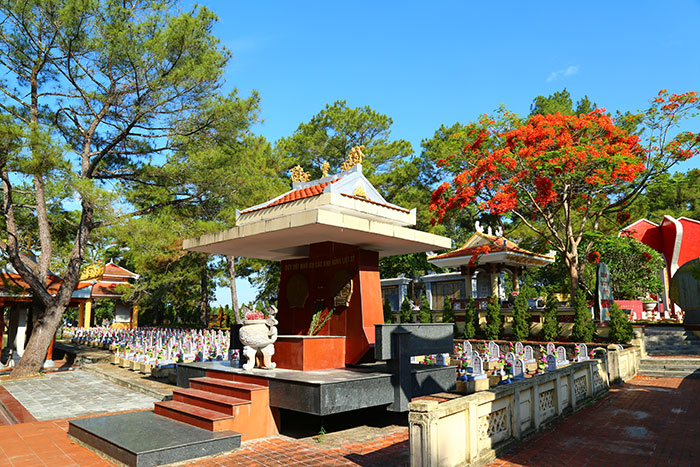
Truong Son Cemetery, located on a hill in the middle of 8 other hills, resembling an 8-petalled lotus, houses 10,327 graves on 4 hectares in a sumptuous forest. A place of great serenity and contemplation, where about 20,000 visitors come every year from all corners of the country to honour the memory of the dead fighters for the homeland.
The Rockpile
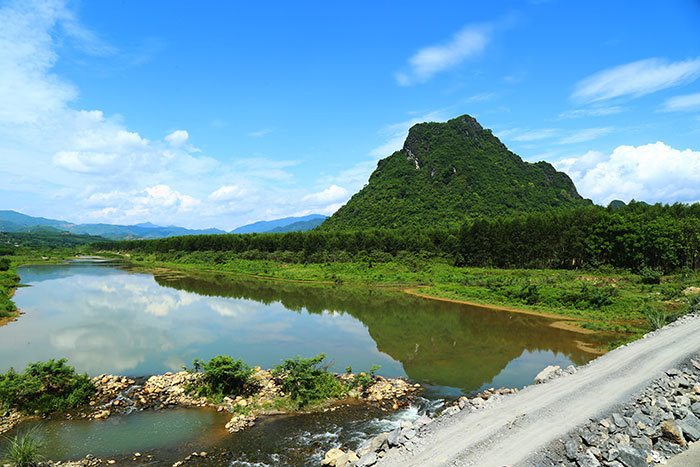
Heading towards the Laotian border to the Khe Sanh US base, you will see from Route 9 the famous Rockpile, a rocky peak of 230 meters high that emerges from a hilly valley. Its a relatively inaccessible location, accessible only by helicopter, which made it an important observation post and a US Marine Corps artillery base from 1966 to 1969.
Dak Rong Bridge
Still on the way to Khe Sanh, you will find on your left the famous Dak Rong Bridge spanning the eponymous river. This bridge was considered to be the beginning of the Ho Chi Minh Trail, and during the years of conflict with the United States, this access point was hotly contested. The Dak Rong Bridge has fallen several times but now it is a large suspension bridge and at the end of which is a commemorative plaque in honour of the soldiers.
Khe Sanh Combat Base

After taking a beautiful mountain road along the Dak Rong River we arrived at the famous historical site of Khe Sanh. Here was a fierce battle, a 77-day siege, the American Dien Bien Phu, where 10,000 Vietnamese and 500 Americans were killed. Considerable losses for the North Vietnamese army allowed it to fix a large number of American troops far from the cities where the Tet offensive was simultaneously taking place. On the site you can see helicopters, tanks, a troop carrier plane, bunkers, shells, bombs... A small museum will explain in detail this terrible battle, a theatre for one of the most famous places in the Vietnam War.
How to get to the DMZ of Vietnam?
The DMZ is located between two UNESCO World Heritage Sites: Phong Nha - Ke Bang National Park and the ancient imperial city of Hue. You can discover the ancient demilitarized zone and all the historical relics of the Vietnam War from Hue as part of a day trip. If you visit the fantastic Phong Nha - Ke Bang National Park and plan to visit Hue then you can stop to see the DMZ. For those who lack time, you can take a plane to Quang Tri, visit the historical sites and then descend on Hue.
Related articles:
>> Hue Imperial city - A to Z Travel guide
>> 3 days in Quang Binh and Phong Nha Ke Bang
>> Vietnam tour 2023-2024: Where to go? Which itinerary? What to do? How many days?
Comment
Other Blog
Categories
Latest News
on 31 Dec, 2025
on 31 Dec, 2025
 Español
Español Français
Français






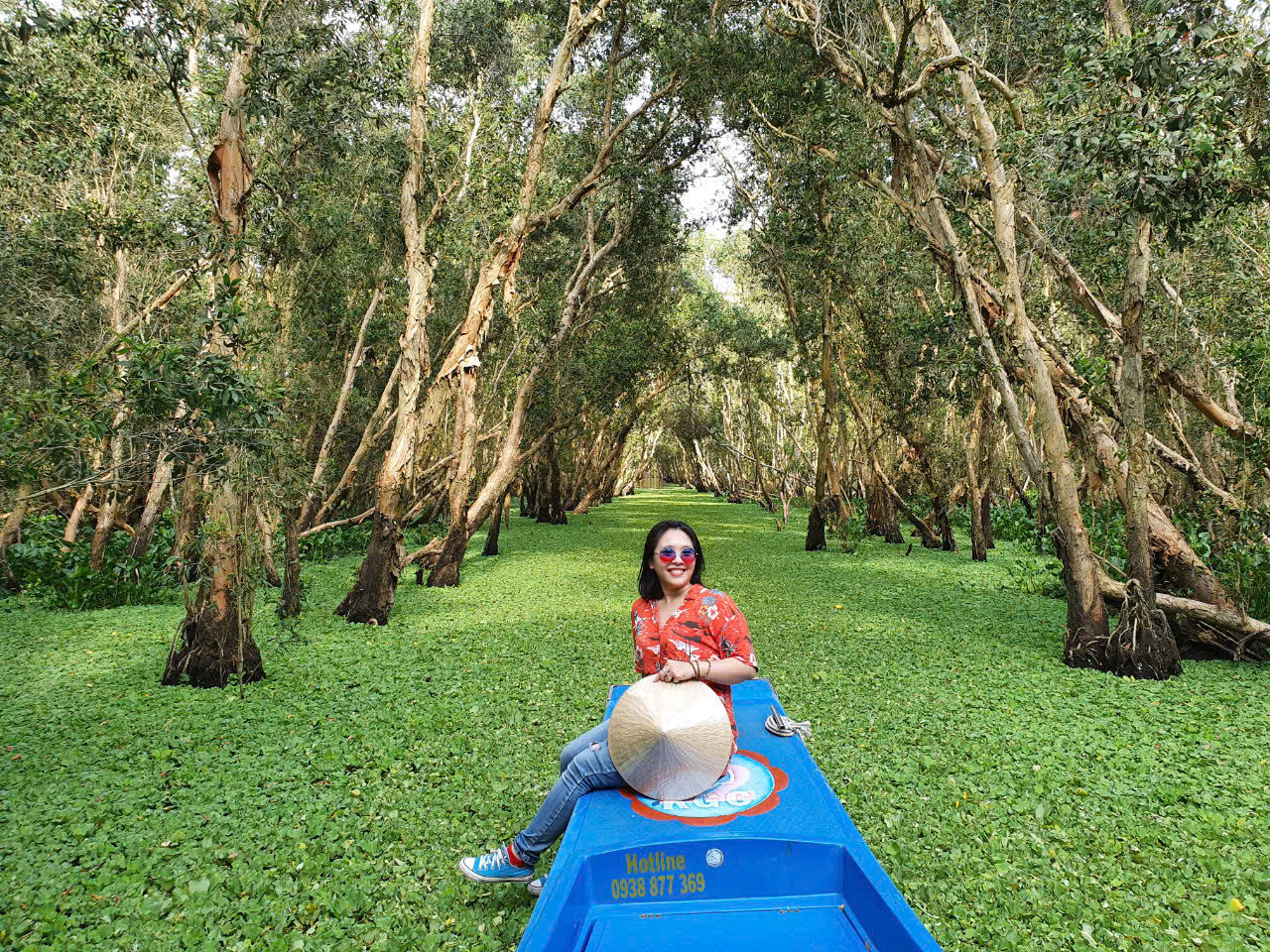
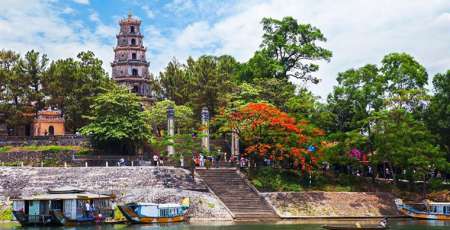


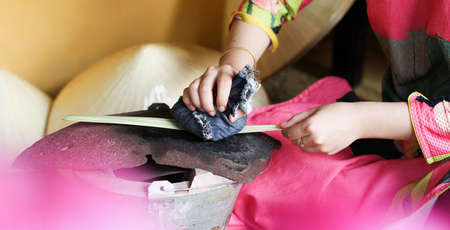

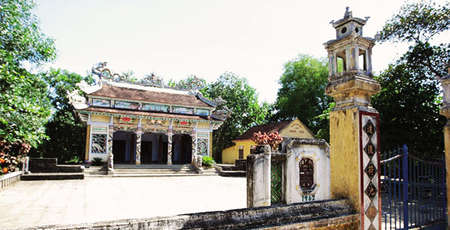







Morgane Ter Cock
on Dec 18, 2025HerbertPhomaMS
on Oct 19, 2025Lilyan Cuttler
on Oct 15, 2025Avenue17XC
on Sep 14, 2025Avenue18JL
on Jul 21, 2025